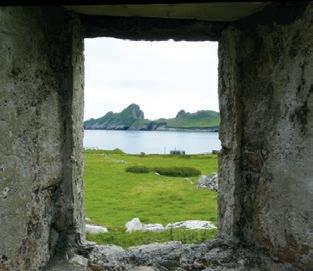
1 minute read
FORGOTTEN?
Written by Margaret B. Russell. Photos courtesy of the National Trust for Scotland Photo Liibrary
The potent allure of a faraway place … of people … of creatures … untouched by the passage of time for thousands of years is fodder for fiction. But the saga of both man and animal that dwelled in St. Kilda, Scotland is no mere fanciful tale. This was an epic journey of endurance, despite the inordinate probability of defeat.
Advertisement

St. Kilda is an isolated, rocky archipelago towering out of the Atlantic, approximately 40 miles/65 kilometers west of the Outer Hebrides. Consisting of the westernmost islands of Scotland, St. Kilda lies at the eruption center of a volcano believed to have been active 60 million years ago.
Animals were vital to the welfare of the St. Kildans. In addition to the seafowl, sheep were the next most important to the community’s survival, supplying such essentials as meat, milk and wool. There were numerous sheep of varying colors and ancestry inhabiting the four islands of St. Kilda: Hirta, Soay, Boreray and Dun.

The incessant struggle of the St. Kildans to exist amid this backdrop was a communal effort that imposed a crucial dependency on the output of every member of the society. The provision of food and clothing commanded mental and physical attention for young and old alike.
The islanders were almost entirely self-sufficient and what few wares they did need from the outside were subject to the erratic delivery of ships piloting the heavy seas in the most precarious weather. Surviving on a diet of various seabirds, and wearing simple attire fashioned from the islands’ sheep, the St. Kildans eked out their survival in sea-swept seclusion.

A man loaded down with a sack of wool on the island of Hirta.




